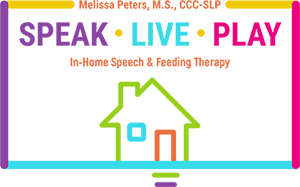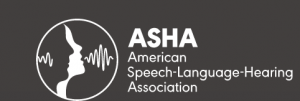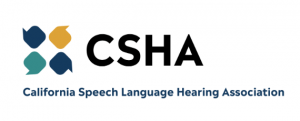Swallowing Disorders in Adults
About Swallowing Disorders
Think about how we eat. First, we need to bring the food or drink to our mouths. We can use a fork, spoon, straw, or hands. Then, we open our mouths and put the food inside. We close our lips to keep the food in our mouths. After that, we chew the food or move the liquid around to prepare for swallowing.
These steps are essential in swallowing therapy because they help us understand how we eat and how to do it properly. By practicing these actions, we can improve our eating skills and enjoy our meals more easily. So, remember to take your time and pay attention to how you eat during swallowing therapy!
We all have difficulties when we swallow. It can be tough chewing on meat, making us gag or struggle to get it down. And there are times when we accidentally swallow a drink the wrong way, causing us to cough and choke. When someone has trouble like this frequently, it’s known as a swallowing disorder or dysphagia (dis-FAY-juh). Swallowing therapy can help with these issues. It’s a special kind of therapy that focuses on improving how we eat and drink. Swallowing therapy can teach us techniques to make swallowing more accessible and safer. So, if you or someone you know has trouble swallowing, know there is help available through swallowing therapy!
Swallowing occurs in three stages or phases, each of which may present challenges. These phases encompass:
- Oral phase (mouth) – Swallowing therapy helps with tasks like sucking, chewing, and moving food or liquid into the throat. Kids need to learn how to eat and drink properly. Swallowing therapy teaches techniques that can make eating more accessible and more enjoyable. So, if your child struggles with eating or drinking, consider giving feeding therapy a try. It can make a big difference in their mealtime experience.
- Pharyngeal phase (throat) – Swallowing therapy involves starting the process of swallowing and squeezing food down the throat. It would be best to close your breathing passage to prevent food or liquid from entering the airway. Food entering the airway can make you cough and even choke. Swallowing therapy helps improve swallowing skills and ensures food goes the right way.
- Esophageal phase – The esophagus is a tube that helps move food from your throat to your stomach. It uses muscles to squeeze the food down. Occasionally, there may be instances where food becomes lodged in the esophagus. Suppose you have a problem with your esophagus or often get acid reflux (which is when you feel a burning sensation in your chest). In that case, you may have to do swallowing therapy to help you swallow better.
Signs of Swallowing Disorders
If you notice any of these signs, it might mean you have a problem with swallowing:
– Coughing while or right after you eat or drink
– Clearing your throat a lot after eating or drinking
– Having a voice that sounds wet or gurgly while or after eating or drinking
– Feeling like there’s something stuck in your throat or chest after eating or drinking
– Needing extra time to chew or swallow your food
– Having food or liquid come out of your mouth
– Food getting stuck in your mouth
– Finding it hard to breathe after meals
– Losing weight
But don’t worry, there’s something called “swallowing therapy” that can help you get better at swallowing and make eating and drinking more accessible for you. Your doctor or speech therapist can tell you more about it and how it can help you feel better.
Having trouble swallowing can lead to several issues that affect your health. These may include:
- Dehydration or not getting enough nutrients from your food.
- Food or liquids accidentally go down the wrong way into your lungs, called aspiration.
- Developing pneumonia or other infections in your lungs.
- Experiencing reflux is when stomach acid travels back up into your throat.
To overcome these challenges, a “swallowing therapy” treatment can be helpful. It focuses on improving your ability to swallow safely and comfortably. So don’t worry; there are ways to address these concerns and improve your well-being.
Some people who have trouble swallowing may feel shy or sad when eating, and they might prefer to have meals alone. But there’s good news! With swallowing therapy, they can learn to eat better and not feel embarrassed anymore. It’s important to remember that everyone deserves to enjoy their meals; swallowing therapy can help make that happen.
 Causes of Swallowing Disorders
Causes of Swallowing Disorders
There are several reasons why someone might have trouble swallowing. Certain medicines can make your mouth feel dry, making it difficult to chew and swallow. Other things that can cause this problem include:
– Certain illnesses or medical conditions
– Problems with the muscles in your throat
– Doing exercises to help you swallow better
Talking to a doctor if you’re having trouble swallowing is essential so they can help you find the best treatment.
These conditions, including stroke, brain injury, spinal cord injury, Parkinson’s disease, multiple sclerosis, ALS (or Lou Gehrig’s disease), muscular dystrophy, cerebral palsy, or Alzheimer’s disease, can result in damage to the brain or nerves. Being mindful of these possibilities is essential as they can significantly impact one’s well-being. Swallowing therapy can be beneficial in treating some of these conditions. Swallowing therapy helps with difficulties swallowing food or liquids, which can occur due to these conditions.
If you have issues with your head, neck, or mouth like these:
– Cancer in your mouth, throat, or tube that connects the mouth to the stomach
– Injuries to your head or neck
– Surgeries on your mouth or neck
– Teeth that are not healthy, teeth that are missing, or dentures that do not fit properly
You might need swallowing therapy. Swallowing therapy is a way to help improve how you swallow.
 Testing for Swallowing Disorders
Testing for Swallowing Disorders
A Speech-Language Pathologist (SLP) can assess your eating and drinking abilities through swallowing therapy. If you have difficulty swallowing, visiting an SLP specializing in helping adults with it is essential. During your sessions, the SLP will perform various tasks to evaluate your ability to eat and drink comfortably.
- They would like to ask you about your overall health, any previous illnesses or surgeries you may have had, and any difficulties you may be experiencing regarding swallowing. Additionally, I would like to discuss the importance of swallowing therapy in addressing these issues and how it can help improve your condition.
- They’ll explore how your mouth muscles can move! It’s fascinating to see how they work. By using simple that even 10-year-olds can understand, we can make it easier to learn about swallowing therapy. So, let’s dive in and learn more about it!
- Pay attention to what you eat and notice how you sit, feed yourself, and what happens when you swallow. This is important for your swallowing therapy. Being mindful of these things can improve your overall well-being and progress in your swallowing therapy. It’s essential for a healthy and happy life!
- The speech-language pathologist (SLP) may conduct specific tests to observe your swallowing abilities if necessary. They will use different methods to see how you swallow, such as watching you closely. This is important to determine if swallowing therapy is needed. Swallowing therapy is a type of treatment that helps improve how you swallow. It’s like a particular exercise for your swallowing muscles. So, the SLP will check how well you swallow and decide if swallowing therapy can be helpful for you.
- Modified barium swallow – allowing therapy involves consuming food or liquids mixed with barium, visible on x-rays. This allows the swallowing therapist to observe food movement in the body. It’s a helpful way to track the progress of swallowing and ensure everything goes smoothly!
- Endoscopic assessment – therapy, the doctor or SLP gently inserts a small tube with a light into your nose. This unique tube has a camera that shows the SLP how you swallow on a screen. It helps the SLP understand how to help you get better at swallowing. So, with this excellent camera, the SLP can watch your swallowing and treat you properly!
Treatments for Swallowing Disorders
The type of treatment you require depends on the issues you are facing. You might need to see a doctor for medical treatment, like taking medicines for reflux. In extreme situations, you may have to get nutrition in different ways. These can include using a tube that goes through your nose or stomach. If you need help with swallowing, your doctor will assist you with swallowing therapy to make it easier for you.
Swallowing therapists can assist you in enhancing your ability to swallow. They may recommend the following:
- Therapy to help strengthen your chewing and swallowing muscles
- Guidance on how to sit or position your head while eating
- Strategies to improve and ensure safer swallowing
- Consuming softer foods or thicker beverages to facilitate easier swallowing.
- Swallowing therapy is the key to improving your swallowing skills and making eating and drinking a breeze!
Your family or caregivers can support you by doing these things:
- They can ask you questions to understand the problems you may have.
- They can ensure they understand what the Speech-Language Pathologist (SLP) will work on.
- They should follow the suggestions of your SLP.
- They can help you with the exercises for swallowing therapy.
- They can prepare safe food and drinks for you.
- They should track how much you eat and drink during swallowing therapy.
- Remember, your family and caregivers are here to help you every step of the way!
Contact us if you have any questions or worries about swallowing disorders! Our team at Speak Live Play is here to help with the best therapy. We’re happy to discuss your child’s unique needs and advise you on improving mealtimes. Don’t hesitate to get in touch with us for support!
Related Article/s:
https://www.swallowingdisorders.org/
https://medlineplus.gov/swallowingdisorders.html https://www.webmd.com/digestive-disorders/swallowing-problems#1




 Causes of Swallowing Disorders
Causes of Swallowing Disorders Testing for Swallowing Disorders
Testing for Swallowing Disorders

